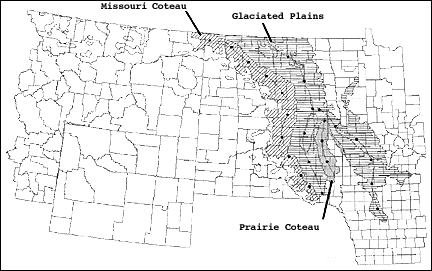
|
| Location of wetland sample area (dark circles) in the Missouri Coteau, Prairie Glaciated Plains. |
| Goal: Conserve and manage the Nation's biological resources for present and future generations. |
| The USGS role is to provide reliable, impartial and timely data on the status and trends of the Nation's biological resources, to provide an understanding of biological systems, and to assess natural and human induced changes to those systems. |
Studies at the Delta National Wildlife Refuge, located at the mouth of the Mississippi River, have demonstrated that vegetated wetlands that have degraded to shallow open-water habitats can be restored to vegetated marsh by use of artificial, uncontrolled, sediment diversions. Sediment deposition through artificial crevasses constructed along tributaries of the Bird's Foot delta have been successful at restoring elevations to the height needed to sustain vegetated marsh.

|
| Location of wetland sample area (dark circles) in the Missouri Coteau, Prairie Glaciated Plains. |
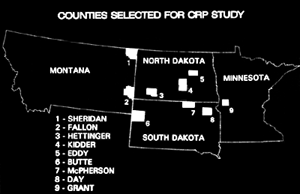 In cooperation with the U.S. Department of Agriculture's Farm Service Agency, the USGS has evaluated the importance to breeding birds of Northern Great Plains grassland fields enrolled in the Conservation Reserve Program (CRP). For 8 consecutive years beginning in 1990, researchers have surveyed breeding birds in about 400 CRP fields in Montana, North Dakota, South Dakota, and Minnesota. Results from this ongoing study showed that CRP grasslands provide critical breeding habitat for many grassland birds and upland nesting waterfowl, including several species that have shown precipitous population declines during the last quarter century. These findings were instrumental in demonstrating the wildlife benefits of the program, which led to its renewal in the 1995 Farm Bill and in designating most of the prairie pothole region as a priority conservation area for the CRP.
In cooperation with the U.S. Department of Agriculture's Farm Service Agency, the USGS has evaluated the importance to breeding birds of Northern Great Plains grassland fields enrolled in the Conservation Reserve Program (CRP). For 8 consecutive years beginning in 1990, researchers have surveyed breeding birds in about 400 CRP fields in Montana, North Dakota, South Dakota, and Minnesota. Results from this ongoing study showed that CRP grasslands provide critical breeding habitat for many grassland birds and upland nesting waterfowl, including several species that have shown precipitous population declines during the last quarter century. These findings were instrumental in demonstrating the wildlife benefits of the program, which led to its renewal in the 1995 Farm Bill and in designating most of the prairie pothole region as a priority conservation area for the CRP.
|
|
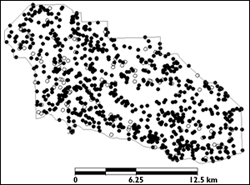
Exotic plants in Theodore Roosevelt National Park. |
USGS scientists found that of 847 transects surveyed in the South Unit of the Theodore Roosevelt National Park , only 108 (13%) were free of exotic plants. Many exotic species have become dominant members of formerly native communities. A collaborative effort with National Park Service managers is underway to incorporate information from these studies into a computerized ranking system that will assist resource managers trying to prioritize their weed management efforts and make the best use of limited funds. |
| In support of the President's Northwest Forest Plan, USGS scientists have implemented the Cooperative Forest Ecosystem Research Program, a long-term cooperative research program involving the Bureau of Land Management (BLM) and Oregon State University. In FY 1997, a detailed research problem analysis was developed that will guide the development and implementation of this program. Initial focus is on meeting BLM's needs for ecosystem-based management of young forest stands, riparian buffer widths, and the biological diversity found in these habitats. |

Forest ecosystem endangered species |
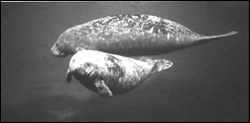
Florida female manatee and pup. |
USGS scientists measured the effects on the Florida manatee of shutdown or conversion of powerplants that provide warm water discharges that were winter refuges for manatees. Research was also conducted on how the South Florida restoration project, which will ultimately redistribute freshwater in many coastal wetlands, will affect manatees. This information is important in the recovery of manatees, which are listed under the Endangered Species Act. |
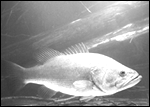
Largemouth bass,
|
Water Availability and Quality || Natural Hazards || Geographic and Cartographic Information || Contaminated Environments || Land and Water Use || Nonrenewable Resources || Environmental Effects on Human Health || Biological Resources Return to Business Activities